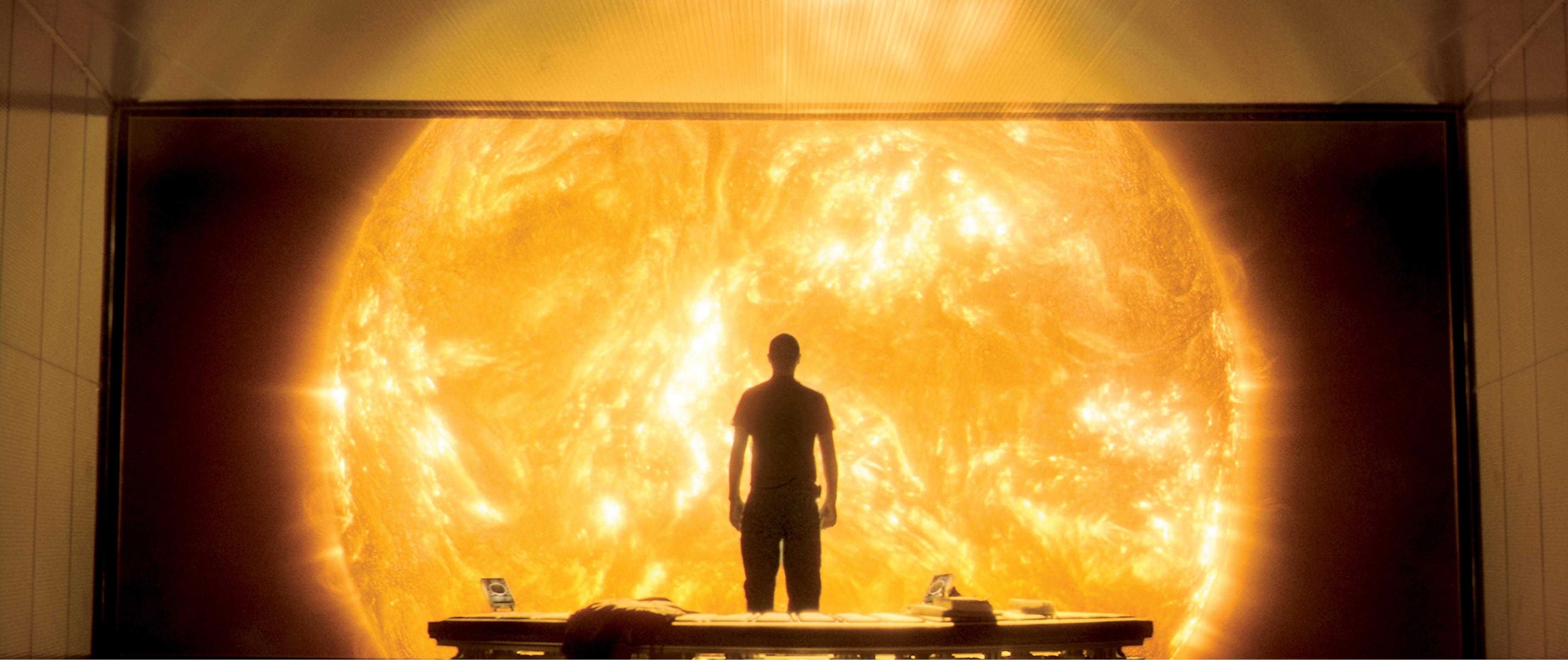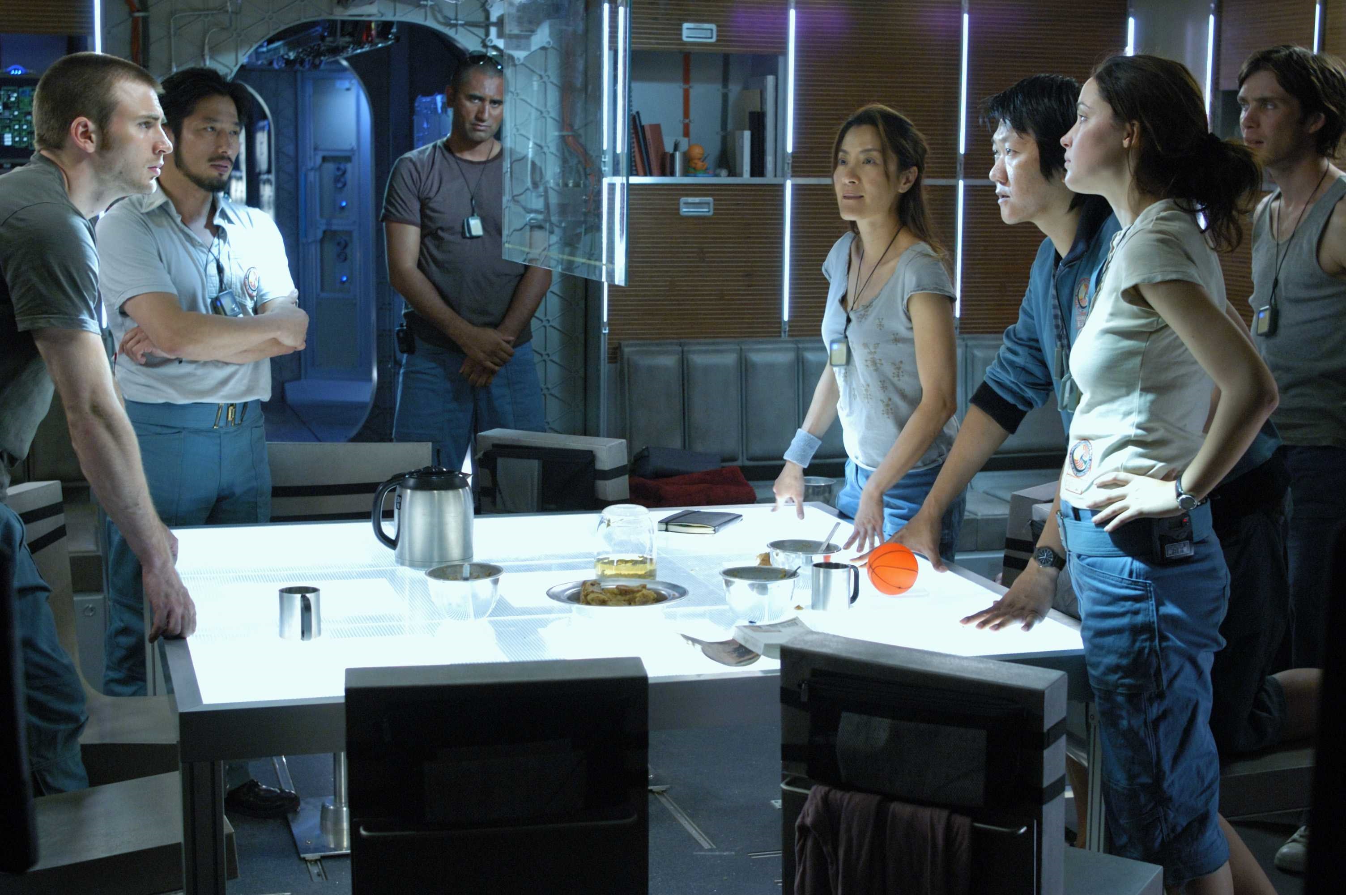
In the movie “Sunshine” by Danny Boyle (IMDB) there is a scene which is impossible to comprehend unless you have some knowledge of physics. The protagonist Robert Capa (Cillian Murphy) finds himself trapped in an airlock from which he must escape at any cost. The airlock contains a space suit, and has one outer hatch towards space, and one inner hatch towards the interior of the spaceship, which is locked.
Capa first uses a blowtorch to bore a tiny hole on the inner hatch; then, he wears the spacesuit, fastens himself securely so that he won’t be blown away, and presses the button which opens the outer hatch. The airlock decompresses violently to the outer void, and for a split second nothing else seems to happen, but immediately afterwards the inner hatch gets mysteriously blown away too, and the atmosphere of the ship escapes, (together with many objects from its interior,) through the airlock, to space.
After a few moments the flow of debris abates, and Capa is able to enter the ship. (Do not try this at home.) The movie does not spend any time explaining the cause of the explosion of the inner hatch; for those who got it, fine; for the rest, it is a mystery.

What blew up the inner hatch was the tiny hole that Capa bore on it before decompressing the airlock. It works exactly the same way a pin prick causes a balloon to explode. You can read all about it in Wikipedia: Balloon popping but I think I can do a better job at explaining it:
Every point on the balloon’s surface experiences an outward force due to the pressure differential between the inside and the outside of the balloon, but it is kept in place due to its bonds with the material surrounding it. Thus, under normal conditions, the forces balance out, and the balloon is in equilibrium.
However, if a tiny hole is made on the balloon’s surface, the bonds are disturbed: the points around the hole do not have enough bonds with surrounding material anymore to keep them in place. As a result, they start pulling away, making the hole slightly bigger; the bigger hole allows more air to escape, thus, increasing the imbalance, and causing the points around the hole to pull away even more. This is a reinforcing feedback loop, which results in catastrophic escalation of the rate at which the hole expands; in other words, the balloon explodes.